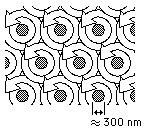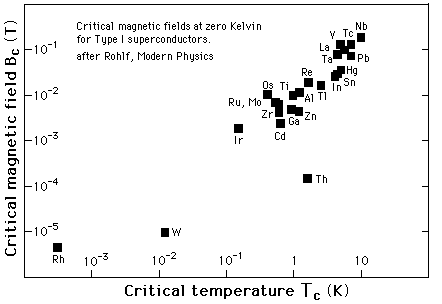Vortex State for Superconductors At the lower of the
two critical
magnetic fields in a Type
II superconductor, magnetic fields begin to penetrate through cores of
normal material surrounded by superconducting current vortices. As long as
these vortices are stationary (pinned), the magnetic fields can penetrate
while still maintaining zero electric resistivity paths through the
material. A size of about 300 nm is typical for the normal cores. While
the Meissner effect is modified to allow magnetic fields through the
normal cores, magnetic fields are still excluded from the superconducting
regions.
 |
As the temperature or the external magnetic field is increased,
the normal regions are packed closer together. The vortices feel a
force when current flows, and if they move, the superconducting
state is lost. Microscopic defects can act to pin the vortices and
maintain the superconducting state to a higher temperature. So the
microscopic structure and fabrication techniques influence their
properties greatly. |
Magnetic fields do penetrate the Type-II superconductors through the
normal cores in a mixed-state
Meissner effect. The vortices can actually be imaged by
magneto-optical techniques. The magnetic field associated with the
vortices can rotate the plane of polarization of incoming linearly
polarized light by the Faraday effect. With a ferrite type detector and
crossed polarizers, the vortices are seen as bright spots and can be
observed in real time. |
concepts
|




